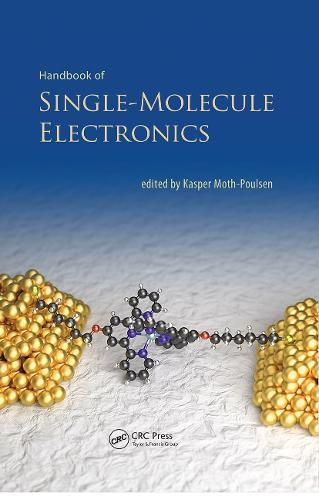Overview
Single-molecule electronics has evolved as a vibrant research field during the last two decades. The vision is to be able to create electronic components at the highest level of miniaturization—the single molecule. This book compiles and details cutting-edge research with contributions from chemists, physicists, theoreticians, and engineers. It covers all aspects of single-molecule electronics, from the theory through experimental realizations and the chemical synthesis of molecular components to the implementation of molecular components in future integrated circuits. This book describes in detail both established methods and recent advances in the field, including vibrational effects, switching phenomena, quantum interference, thermal power, and parallel assembly strategies. The authors add more details to the chapters than typically found in the primary literature so that the book can be read not only by specialists but also by non-experts and students with an interest in the research field. Each chapter is accompanied by problems, and a solutions manual is also provided.
Full Product Details
Author: Kasper Moth-Poulsen (Chalmers University of Technology, Gothenburg, Sweden)
Publisher: Pan Stanford Publishing Pte Ltd
Imprint: Pan Stanford Publishing Pte Ltd
Weight: 0.762kg
ISBN: 9789814463386
ISBN 10: 9814463388
Pages: 448
Publication Date: 03 August 2015
Audience:
College/higher education
,
Professional and scholarly
,
Tertiary & Higher Education
,
Professional & Vocational
Format: Hardback
Publisher's Status: Active
Availability: Manufactured on demand

We will order this item for you from a manufactured on demand supplier.
Reviews
This is a well-written book which covers all the important aspects of single-molecule electronics. A detailed description of this highly interdisciplinary field, from fundamental theory to experimental techniques, from most advanced studies to perspectives of potential applications, is represented in this book, thanks to the contributions from highly recognized authors of different backgrounds. It cannot only be a good reference for specialists who are doing cutting-edge research on molecular electronics, but also inspire young scientists and students who are interested in this field. - Prof. Wenping Hu, Chinese Academy of Sciences, China
This is a well-written book which covers all the important aspects of single-molecule electronics. A detailed description of this highly interdisciplinary field, from fundamental theory to experimental techniques, from most advanced studies to perspectives of potential applications, is represented in this book, thanks to the contributions from highly recognized authors of different backgrounds. It cannot only be a good reference for specialists who are doing cutting-edge research on molecular electronics, but also inspire young scientists and students who are interested in this field. - Prof. Wenping Hu, Chinese Academy of Sciences, China
Author Information
Kasper Moth-Poulsen received his PhD in 2007 from University of Copenhagen, Denmark. He continued his career as a post doctoral scholar in Copenhagen (2007–2009) and at University of California, Berkeley (2009–2010) before joining Chalmers University of Technology, Gothenburg, Sweden, as an assistant (2011–2014) and associate professor (2014–). His research activities focus on nanomaterials chemistry, synthesis, and assembly of single-molecule electronic components and on development of methods for conversion and storage of solar energy.



